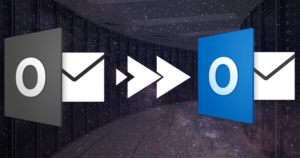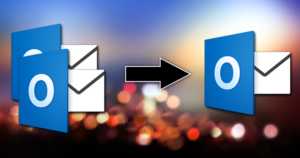Outlook users mainly use two key mailboxes, User and Shared, to manage their emails and collaborate effectively with the team. Both types of mailboxes are used to send or receive emails, but they differ in terms of setup, management and usage. This guide will focus on the Shared mailbox vs. User mailbox in Outlook. Also, we will list the advantages and disadvantages of each mailbox, User or Shared.
Large and small organizations use different types of mailboxes to specify their business needs and simplify communication. So, it is crucial for organizations to know when to use a User or Shared mailbox to meet business-specific needs. Before going to discuss the key differences between Shared and User mailboxes, let us explore the Outlook User and Shared mailboxes in detail.
What is a User Mailbox?
User or Regular or Full mailbox is a primary mailbox that individual users use to manage their private or personal emails. The User mailbox is controlled and owned by individual users who need privacy and personalized email management. Users can easily sync their Regular or User mailbox across multiple devices for streamlined access.
This mailbox ensures privacy for individual users’ emails and allows them to make secure communication. Moreover, the users can set up their regular mailbox according to their needs, like customization to create folders, contact lists and rules.
Advantages of the User Mailbox:
- Individual users can only access their own Regular or User mailbox unless the additional permissions are applied.
- User mailbox offers more flexibility than the Shared mailbox for individual users.
- Moreover, when users use the Regular mailbox to send emails; the name of the sender will clearly display on the receiver’s screen.
- Users can easily manage settings, including filters and email signatures.
- Users can effectively integrate User or Regular mailboxes with the Exchange Server. That offers features like public folders, shared calendars and email sync across multiple devices.
Disadvantages of the User Mailbox:
- Users can’t use the Regular or User mailbox for teamwork or shared access across the team members.
- It is a bit complex for users to grant access permission to others.
- Users need a license for a Regular mailbox that increases the overall cost of the businesses as compared to the Shared mailbox.
What is a Shared Mailbox?
The Shared mailbox is specially designed for team collaboration. Multiple users can access a Shared mailbox to send and read emails smoothly. This mailbox is not for private or personalized use among the users. Businesses can efficiently manage their teamwork and collaborate better with them to enhance productivity.
A Shared mailbox is perfect for customer support, marketing enterprises and other businesses where collaboration is necessary. Moreover, team members are only required to enter their personal details to access the Shared mailbox. The unified email address will be displayed on the receiver’s screen if anyone from the team sends emails.
Advantages of the Shared Mailbox:
- A Shared mailbox can easily be accessible by multiple users using their own credentials to read, manage and send emails through it.
- It doesn’t require separate usernames and passwords to access the Shared mailbox as we need in the User mailbox.
- Shared mailboxes do not have their own calendars, contacts and tasks like the User mailbox has its own.
- Users do not need additional licenses for the Shared mailbox, which makes it cost-effective for businesses.
Disadvantages of the Shared Mailbox:
- Setting up permissions and rules in the Shared mailbox is complex without proper guidelines.
- Businesses need IT Admin support to manage and set up a Shared mailbox.
- It is not ideal for personalized and private communication.
Key differences between Shared and User mailboxes
Now, we will share the key differences between User vs. Shared mailbox using a simple table. So users can easily understand the differences and know when they should use both types of mailboxes.
| Features | Shared Mailbox | Outlook User Mailbox |
|---|---|---|
| Ownership | Assigned to multiple users | Individual users |
| Access | Accessible by groups or teams | Only individual users or those who have appropriate permission |
| Email Sending | Only send emails on behalf of the Shared mailbox or depending on assigned permissions | Send emails from their personal email address |
| Control | Limited control over the email management | Full control over the emails, calendars and settings |
| Licensing | Does not need a separate license | Require a license for users |
| Calendar, Contacts & Tasks | Does not have its own calendar, contacts & tasks | Has its own calendar, contacts & tasks |
| When to Use | Using for collaborative platform among groups or teams | Only personal email for individual users |
Which one you should choose?
Use User mailbox when:
- When you need a personalized and secure mailbox to communicate.
- You want full access to the emails, contacts and settings.
- If you do not need to share a mailbox with groups or teams, you can choose a User or Regular mailbox.
Use Shared mailbox when:
- If it is necessary for you to collaborate with groups or teams through a common email address, use a Shared mailbox.
- You want to centralize communication management and don’t want to give complete control over the personal settings.
- A Shared mailbox is ideal for customer support, marketing agencies and other organizations where collaboration is necessary.
Key Takeaways from the Blog!
User and Shared mailboxes are the key mailboxes of Outlook, which are widely popular for managing emails among individuals and teams. This User vs. Shared mailbox discussion will help you to understand which type of mailbox you should use for better workflow according to your needs. If you are looking for a tool that can help you manage everything, including backup, recovery, etc., with ease, the Shoviv Exchange Server Suite is the perfect software.
This software can easily manage Exchange mailboxes, Outlook mailboxes, Exchange Migration, Exchange or Office 365 mailbox backup, and many more. It is an easy-to-use software that comes with a simple user interface. Users can also try this tool in their system by installing its free demo version and processing the first 50 items per folder for free.
Frequently Asked Questions
Ans. You can set permissions using the three options:
Full access: Allowing users to act as the owner when accessing the Shared mailbox.
Send As: Permitting users to send emails from the Shared mailbox.
Send on Behalf: Allowing users to send emails on behalf of the Shared mailbox.
That is how you can manage permissions in the Shared mailbox.
Ans. Yes, the admin can convert the Shared mailbox to a User mailbox or vice versa using the Office 365 Admin Center and PowerShell commands.
Ans. Users do not require a license if the Shared mailbox is up to 50 GB in size. In case the size exceeds more than 50 GB, users require a separate license in Office 365.
Ans. Yes, external senders can send emails to the Shared mailbox. For this, the admin needs to set up mailbox settings.
Ans. Yes, users can use Outlook and Microsoft 365 to set up automatic replies for the Shared mailbox.
- How to Backup and Restore Emails in Webmail? - March 25, 2025
- How to Migrate Outlook to New Computer? - February 15, 2025
- Fix If Outlook Cannot Display the Specific Folder Location - February 1, 2025


